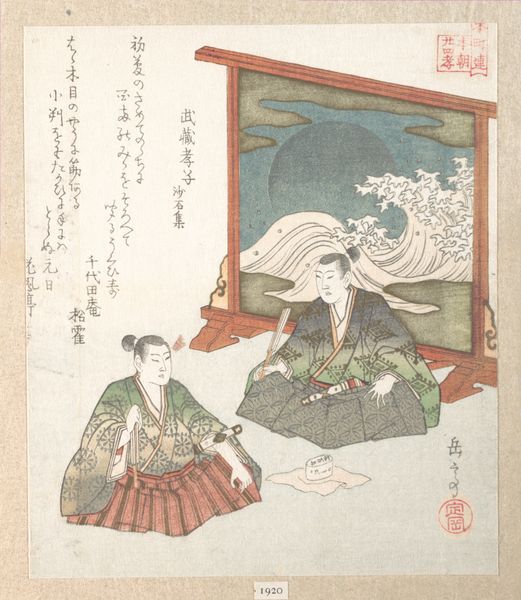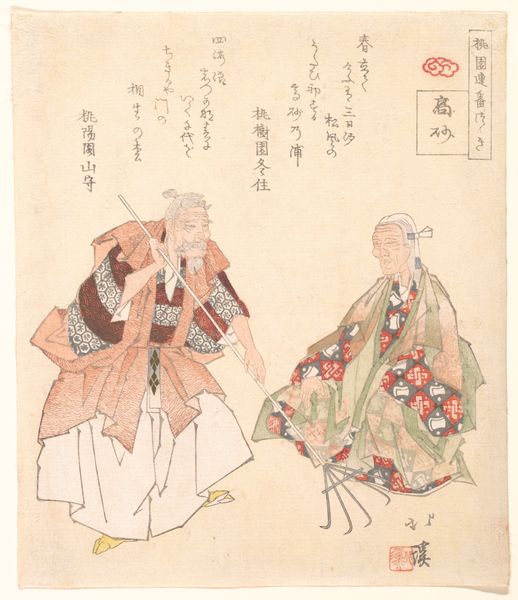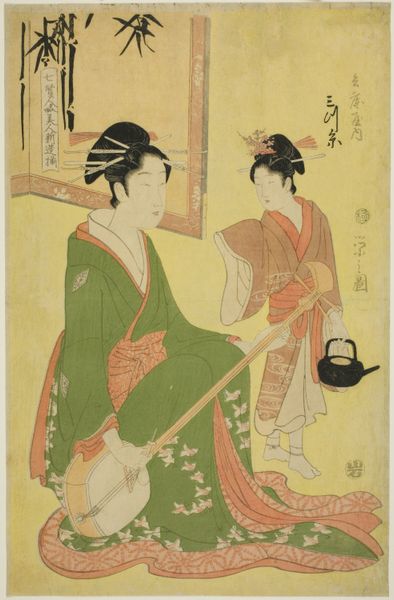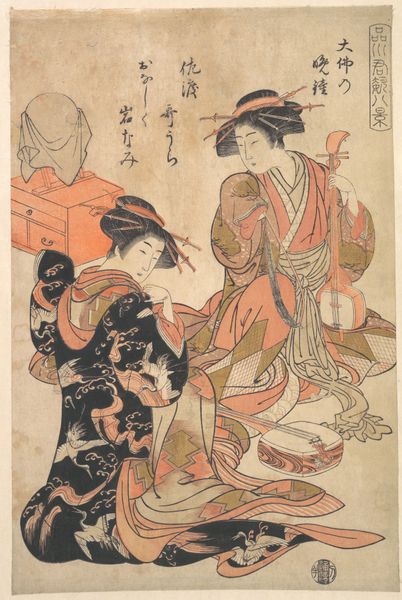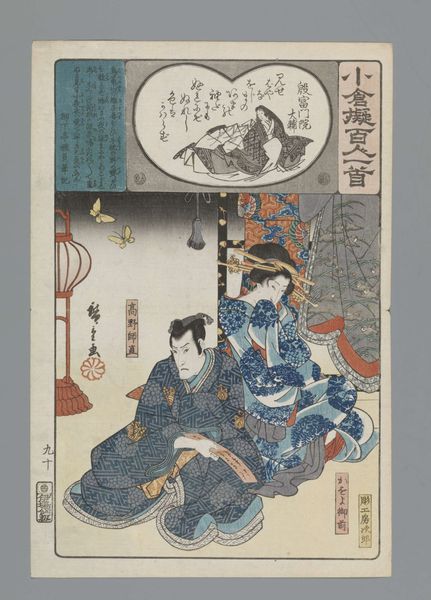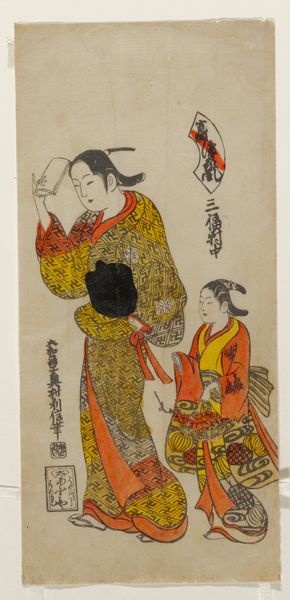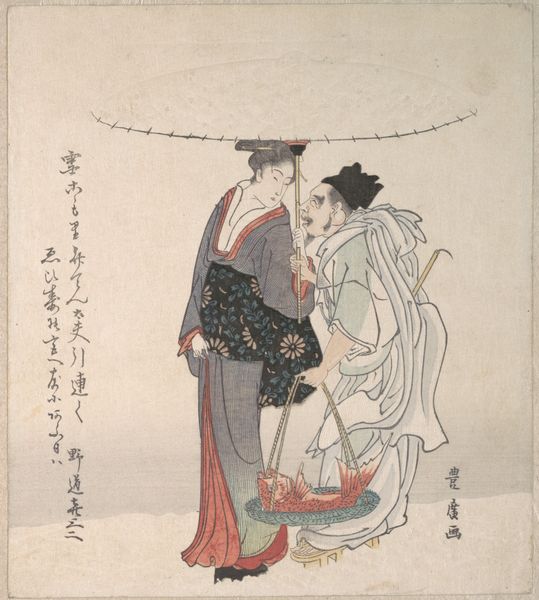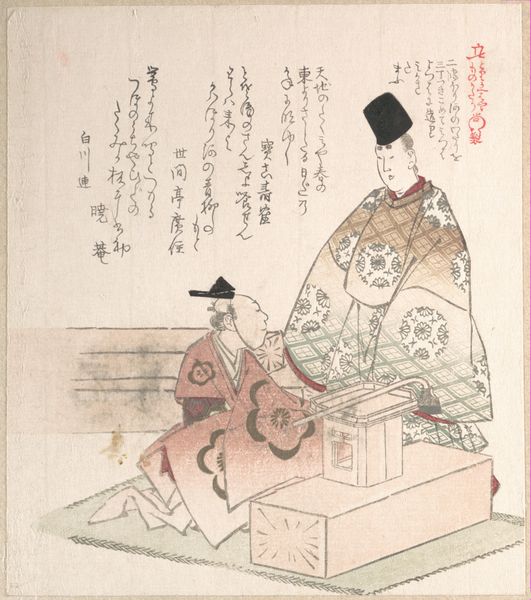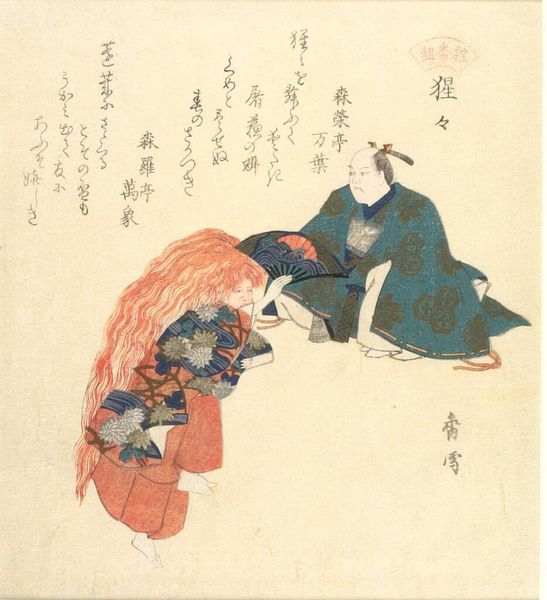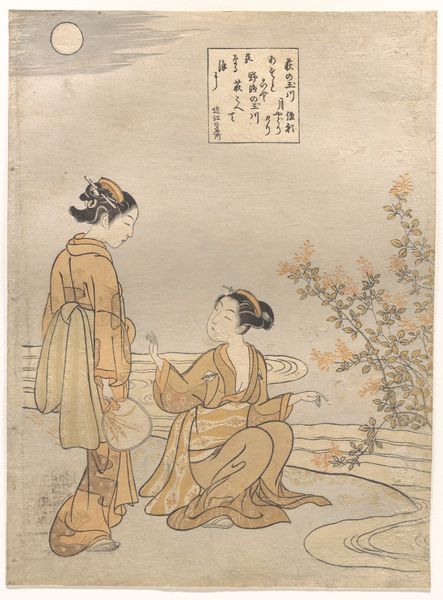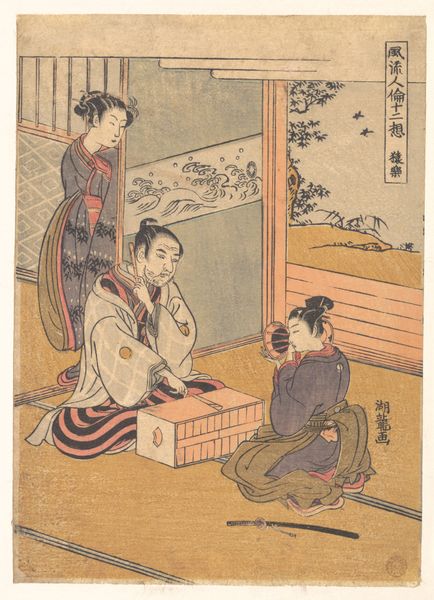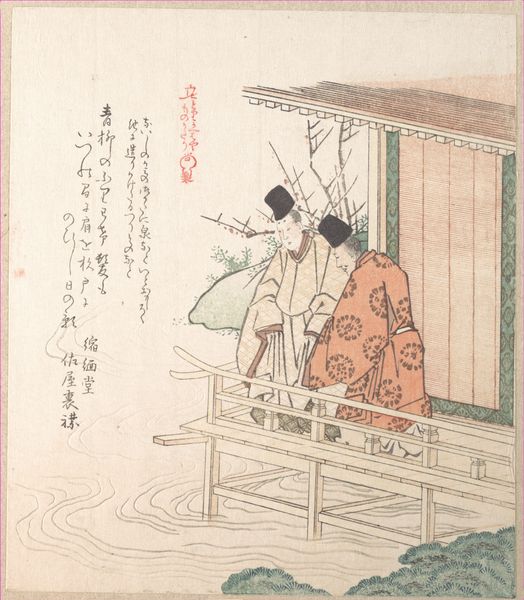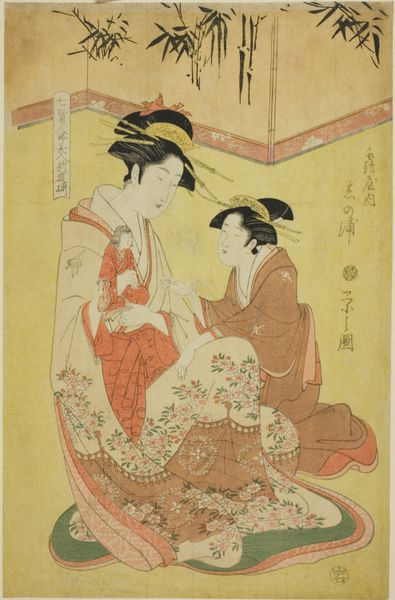
History of Kamakura (where Minamoto Shogunate was Established) 19th century
0:00
0:00
print, woodblock-print
#
narrative-art
# print
#
asian-art
#
ukiyo-e
#
figuration
#
woodblock-print
#
history-painting
Dimensions: 8 x 7 1/4 in. (20.3 x 18.4 cm)
Copyright: Public Domain
Curator: Let’s turn our attention to a striking 19th-century woodblock print by Kubo Shunman entitled "History of Kamakura (where Minamoto Shogunate was Established)." This ukiyo-e work offers a fascinating glimpse into Japanese history and aesthetics, and it currently resides here at the Metropolitan Museum. Editor: Immediately, the formality of the figures juxtaposed with the playful rendering of the screens behind them catches my eye. The overall palette of subdued hues evokes a sense of restrained power, don’t you think? It's almost like watching a staged drama, very deliberately posed. Curator: Precisely! Shunman often situated his works within a very particular cultural context. This print depicts a significant moment, reflecting on the establishment of the Minamoto shogunate, so this is much more than "playful rendering" to me. Editor: Tell me more about that context. As an iconographer, the symbols here intrigue me – the nobleman figure especially carries a heavy visual burden of representing this transition of power. How does the kneeling musician complicate or serve this narrative? Curator: The figures, rendered with such delicate lines and subtle coloring, invite contemplation of power dynamics and social roles of that time. I read this musician as acting as a medium to represent and give a voice to marginalized members of society excluded from traditional forms of power during the period. He reminds us to challenge what this historical image claims to present in terms of representation. Editor: Fascinating. It is almost as if through this symbolism and juxtaposition we are questioning our interpretation of established cultural imagery. Curator: It's important to acknowledge that Shunman himself lived and worked in a rapidly changing Japan. His work isn’t just a static historical document, it offers a dynamic intervention into debates concerning legacy and identity. It demands that we unpack the very structures of power being portrayed. Editor: Ultimately, "History of Kamakura" allows us to appreciate the intricate blend of art, power, and historical memory through a captivating woodblock print, with imagery both overt and cleverly woven into its design. Thank you for sharing a bit of your deep understanding with me. Curator: A pleasure! I am delighted that Shunman's nuanced depiction offers such insight, provoking further inquiry and thoughtful introspection regarding Japanese identity, society, and its formative roots in visual narrative and cultural memory.
Comments
No comments
Be the first to comment and join the conversation on the ultimate creative platform.
